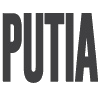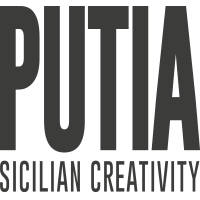“Nun ci cririri... ma guàrdati”
(traditional Sicilian saying - don't believe it, but beware) Maybe there's an equivalent of this expression around the world, but as far as Sicily is concerned, everybody has heard it at least once in their life. You might be among those who believe it, or among those others who smile for those who believe it. Whether your choice falls on scepticism or on faith however, the world of superstitions has probably had some impact on your life, even if only cultural. That's certainly true in Southern Italy, especially in Sicily. Just think about all the most common symbols, superstitious gestures, propitiatory rites, lucky charms and amulets, or think about the custom of "touching", whether it's body parts or objects, to chase away bad luck... In short, the list is quite rich, and you've probably come up with some examples of your own.
Whether you believe or not in their "power", these symbols have their their own charm, even without knocking on the supernatural's doors: all you need is enough curiosity to discover their origins (often ancient), their stories (full of anecdotes), and their uses (sometimes surprising).
Another example is the horseshoe, one of the best known and used lucky charms in the world. The most common origin of this symbol seems to be its natural association with the female reproductive system. That's the reason why - for instance - horseshoes used to be hung outside people's houses: it worked in fact as a "distraction" for demons and devils who, blinded by lust (and perhasp not especially sharp), mistook it for female body parts, and were attracted by it. This belief was so strong in the past, that in the Middle Ages female body parts used to be sculpted outside churches' façades, so that demons would not try to enter those sacred places. These unusual details were later removed almost entirely, because deemed "too realistic". The cornetto, strictly red, is one of the most ancient symbols and is basically used in all cultures. One of the reasons of this spread is its meaning, which is immediately recognisable. It is associated with animal horns, seen as both a symbol of power and ferocity in battle and of great courage, respect and leadership, even of divinity. It's no wonder that these little horns are often topped by small crowns (though to be fair, this addition is quite recent). Moreover, the somewhat phallic shape is associated with virility, fertility and abudance. The same symbolism is found in the red colour,which is also why these horns are often made with coral, especially as small pendants. Little lava stone horns, Folk Lavastone There are some symbols which have (or used to have) a different meaning in Sicily than the one most commonly known. In theTrinacria for instance - another of the most famous Sicilian lucky charms - the snakes shaping Medusa'hair are not a reference to the act of "petrifying" your enemies, nor are they associated with sin (this one's probably a heritage of Christianity), but they belong to a much older Sicilian tradition, and were used as a sign of wisdom and prudence. It often happens, with objects of our evryday life, that the more we use them, the more shabby and "seasoned" they appear, the more they tell us about us "owners". In the same way, all these beliefs, these lucky charms and amulets, they tell us stories of Sicily and Sicilians, of their way of living life and how they face its hardships. This variety is born both from an equally multifaceted popular tradition, and from a more ancestral and universal desire, that of escaping all uncertainties in life by finding our answers in the power of the supernatural and the devine, inevitably placed beyond our control (and therefore, beyond our responsibility). It should not surprise then, that even though these beliefs are spread all over the worls, they are also particularly strong in a land well known for its traditionally "fatalistic" philosophy. The Horned Hand for instance, is common in all Southern Italy, and its meaning, as well as its use, varies a lot. Besides being a protective amulet (when "pointed" downwards, it drives away bad luck), the gesture is a colourful insult as well, when pointed towards a cuckolded husband, whose wife cheated on him. This meaning seems to come straight from the Myth of the Minotaur, a creature half man half bull. He was the son of Pasiphaë, wife of Minos and Queen of Crete, who was led by Zeus into falling in love with a bull, and later gave birth to its child (the Minotaur). Since thay day, according to the myth, the Cretens began to mock their king and his wife's infidelity by "saluting" him with the gesture of a horned hand (in the picture on the right, Horned hand, Don Corleone objects
The Horned Hand for instance, is common in all Southern Italy, and its meaning, as well as its use, varies a lot. Besides being a protective amulet (when "pointed" downwards, it drives away bad luck), the gesture is a colourful insult as well, when pointed towards a cuckolded husband, whose wife cheated on him. This meaning seems to come straight from the Myth of the Minotaur, a creature half man half bull. He was the son of Pasiphaë, wife of Minos and Queen of Crete, who was led by Zeus into falling in love with a bull, and later gave birth to its child (the Minotaur). Since thay day, according to the myth, the Cretens began to mock their king and his wife's infidelity by "saluting" him with the gesture of a horned hand (in the picture on the right, Horned hand, Don Corleone objects The pine cone and the red horn (best known with the italian name, cornetto) are both very ancient propitiatory symbols. The former was already used in Ancient Egypt and in Mesopotamia, while the latter was even attested back to Prehistory.
The pine cone and the red horn (best known with the italian name, cornetto) are both very ancient propitiatory symbols. The former was already used in Ancient Egypt and in Mesopotamia, while the latter was even attested back to Prehistory.
The pine cone is a symbol of fertility and abundance, with an additional reference to the light of the spirit. When it opens, a pine cone spreads its seeds all around, ensuring thus the plant's survival. If you take a closer look, you will spot it everywhere in Sicily: on gates and walls, on balconies and as a piece of forniture. Even on some old-fashioned canopy bed, being associated with fertility as well (in the picture on the left, "Pigna", xylography by Stefania Cordone).
The origins and symbolism of the Trinacria are however so complex and interesting on their own, that they deserve their own article (if you wish to know more about it, you can check it out here: "The Trinacria: mythology and mystery behind one of Sicily's symbols"). Today, it's one of the symbols most associated with Sicily (think about the Sicilian flag).Cover image: wallpaperup.com

